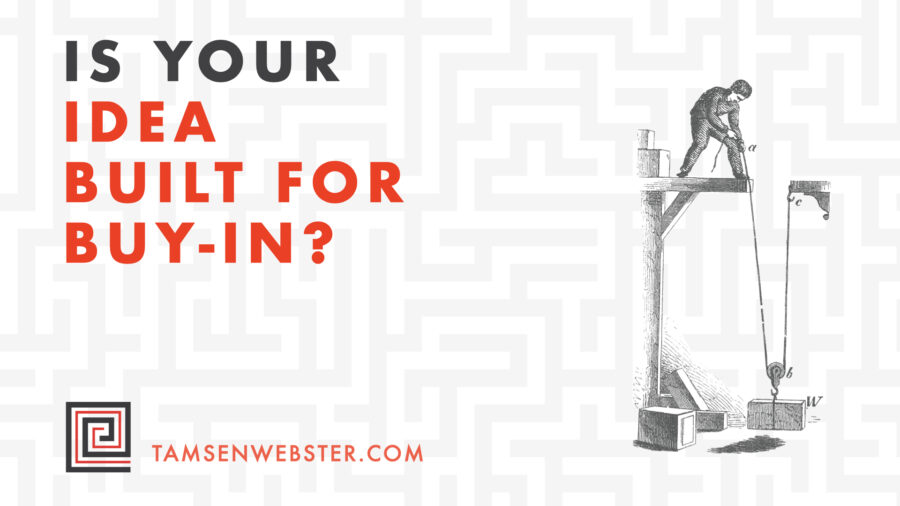I love a good worksheet. They help make complicated processes clear and bring all your ideas together in one place, where you can actually see what you’re working with. That kind of clarity is especially important when you’re building a new message or trying to strengthen an existing one.
That’s why I created the Message Foundation Worksheet, also known as the Buy-In Blueprint. It’s the tool I wish I’d had when I was first trying to make sense of how ideas become messages that move people.
The worksheet is free, digital, and designed to help you do one of three things:
1. Organize and test an existing message
It lays out the six core elements any message needs to succeed, all in one place. The more clearly you see the pieces, the more easily you can assess if they work together the way you want them to.
2. Build a new message from scratch
The worksheet walks you step by step through how to construct a message that aligns with how people build belief. That means identifying:
-
A question your audience already has
-
Two key components of your idea
-
The underlying truths that support them
It’s not about what sounds clever. It’s about what earns confidence.
3. Figure out why a message isn’t working
When something isn’t landing, this worksheet helps you identify which of the message’s six core parts might be missing, misaligned, or misunderstood.
What the Message Foundation Worksheet Includes
At the heart of the worksheet is a simple structure that acts like a house: roof, walls, door, and foundation. This house represents your Core Claim, and each part of the worksheet helps you construct it piece by piece.
Here’s how it works:
The Core Question (the door)
This is the question your audience is actively and knowingly asking. It should be urgent, relevant, and framed in their language—not yours. You’re aiming for something they’re already Googling answers for, not something you have to convince them to care about.
The Core Components (the walls)
Every strong message stands on two “load-bearing” ideas. These are the essential parts of your solution, product, or approach. They should be desirable, clear, and independently valuable. If you remove either one, your idea falls apart.
The Core Principles (the foundation)
These are the truths your audience already believes that support the relevance of each Core Component. They’re not about what your idea does, but why the audience should trust it. Think of them as “belief glue.”
The Core Strategy (the shape of the roof)
This is where the two Core Components come together in an unexpectedly obvious way. The structure should be simple—just two words. One word modifies the other, forming a memorable and meaningful pair.
The Core Claim (the roof itself)
This is the position you are taking. It combines the audience’s question with your strategic answer. It’s your point of view, made explicit.
The Core Case (the frame behind it all)
Once the other elements are in place, this is your one-sentence argument. It says: Because [truth about Component 1] and [truth about Component 2], [Core Claim].
Why This Works
Most people try to build messages from the outside in. They start with headlines, slogans, or taglines. But messages don’t work unless they are built on a solid foundation of shared beliefs and structured logic.
This worksheet helps you build from the inside out.
It captures not just the “what” of your message, but the “why” and the “how” behind it. Which makes it easier for others to understand, remember, and believe.
It also plays well with the Red Thread and the Core Case frameworks. In fact, the Message Foundation Worksheet is a practical way to externalize the mental model behind a message, which is exactly what belief change requires.
Want Help Using It?
You can download and use the worksheet on your own anytime. But if you want guided help working through it, I teach it in The Fundamentals of Message Design—a live, interactive workshop offered by the Message Design Institute. Sign up here: messagedesigninstitute.com/events
Start with the Message Foundation
Whether you’re pitching a new idea, launching a new product, or reworking a tired message, the Message Foundation Worksheet gives you a clear, structured way to figure out what you’re really saying—and how to say it so others believe it.
